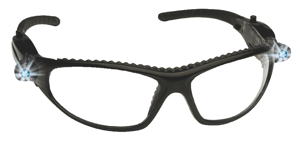Online Exclusive: Six Tips for Promoting Eye Safety in the Workplace
Cintas offers tips to protect employees for Eye Injury Prevention Month.

In recognition of Eye Injury Prevention Month, Cintas Corporation has released its top tips for eye safety. According to the Occupational Safety and Health Administration (OSHA), more than 1,000 eye injuries occur in American workplaces every day. The financial burden of these injuries is costly--more than $300,000 per injury in lost production time, medical expenses and workers compensation.
"Oftentimes, eye injuries can be prevented, or in many cases minimized," said Nancy Petersen, Senior Marketing Manager, First Aid & Safety, Cintas. "Understanding the causes of these injuries and ways to reduce their occurrence and impact will benefit both workers and businesses."
The top tips for promoting eye safety include:
1. Identify workplace hazards: Eye injuries can be caused by many different hazards including flying or falling objects, chemical exposure, contact with work equipment or objects, ultraviolent light emitted from welding and debris such as wood, glass and plastic. Conduct a safety walk-through of your business to locate areas and tasks that pose as risks to workers.
2. Select appropriate eyewear: According to OSHA, 90 percent of eye injuries can be prevented through the use of proper personal protective equipment (PPE). Eyewear must protect against the specific hazards employees will encounter and be properly fitted to the individual. Since different styles have varying levels of comfort and must help protect certain eye dangers, purchase multiple types of eyewear, including prescription lenses for workers who require them. Consider having your company logo branded on glasses to encourage workers to take care of PPE and leave eyewear at work at the end of each day.
3. Provide regular training: The Bureau of Labor Statistics reports that nearly 60 percent of workers sustaining eye injuries were not wearing eye protection at the time. Use training as an opportunity to highlight eye injury statistics and workplace hazards, demonstrate how and when to wear eye protection and how to properly care for eyewear. Training should also provide guidelines for proper emergency response in the event that an eye injury occurs.
4. Remove ineffective eyewear: Replace eyewear that scratches easily, is not anti-glare, fits poorly or is uncomfortable for employees. Workers may be hesitant to wear eyewear if it reduces their ability to perform their job or is uncomfortable. Additionally, set up a schedule for inspecting eyewear for cracks or loose frames and throw away damaged PPE.
5. Promote PPE compliance through visual reminders: Safety signage can remind workers of specific hazards, the importance of using eyewear and proper emergency response. Place posters and signs near machinery, chemicals and in common areas such as break rooms. Make sure text is supplemented with pictures to warn employees whose first language may not be English.
6. Provide emergency treatment options: Eyewash stations should be placed within 10 seconds of eye hazards to help flush eyes and relieve irritation. Clean equipment every few months or more often if necessary to maintain water and solution levels. Keep eye drops, eye wash and gauze stocked in first aid cabinets that are easily accessible.
"Encouraging eye safety goes beyond providing eyewear to workers," added Petersen. "When safety managers make an effort to work with and educate employees, achieving workplace compliance and safety become much simpler tasks."
For more information on first-aid and safety programs from Cintas, please visit www.cintas.com/firstaidsafety.















